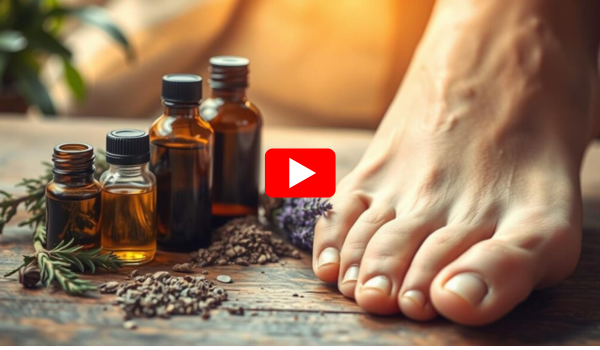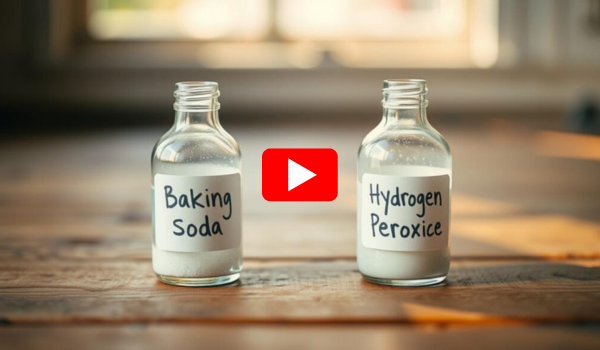Does Alcohol Kill Toenail Fungus? Facts You Need to Know!
Contents
Toenail fungus, medically termed onychomycosis, is a prevalent condition that affects a significant portion of the population.
Characterized by discoloration, thickening, and brittleness of the nails, it can lead to discomfort and self-consciousness.
Given its persistent nature, many individuals seek effective treatments, including home remedies like alcohol.
Alcohol may kill some surface-level toenail fungus but is generally not effective for deeper infections. Stronger antifungal treatments are recommended.
But does alcohol truly have the efficacy to combat toenail fungus? This comprehensive guide delves into the science behind alcohol’s antifungal properties, its effectiveness against toenail fungus, and alternative treatment options.
Understanding Toenail Fungus
Onychomycosis is primarily caused by dermatophytes, a group of fungi that thrive in warm, moist environments. These fungi invade the nail bed, leading to symptoms such as:
- Yellow or white discoloration
- Thickened nails
- Brittle or crumbly texture
- Separation of the nail from the nail bed
The condition is notoriously stubborn, often requiring prolonged treatment periods and sometimes recurring even after successful therapy.
The Role of Alcohol in Treating Fungal Infections
Alcohol, particularly isopropyl alcohol (rubbing alcohol), is renowned for its antiseptic properties. It effectively kills bacteria and some fungi on the skin’s surface, making it a staple in first-aid kits. The question arises: can this property be harnessed to treat toenail fungus?
Research indicates that while isopropyl alcohol can eliminate certain fungi on the skin’s surface, its efficacy diminishes when it comes to penetrating the nail plate to reach the underlying infection.
The dense structure of the nail acts as a barrier, limiting the alcohol’s reach and, consequently, its effectiveness against deeper fungal infections.
Scientific Insights
A study published in the Journal of the American Academy of Dermatology explored the use of a 10% hydroalcoholic propolis extract in treating onychomycosis.
The findings suggested that while the extract exhibited antifungal properties, its effectiveness varied among patients, and further research was recommended to establish its efficacy conclusively.
Additionally, a study assessed the retention rates of ethyl alcohol in infected versus healthy nails.
Results revealed that ethyl alcohol evaporated more rapidly from infected nail samples, suggesting that infected nails might not retain alcohol long enough for it to exert a therapeutic effect.
Home Remedies and Alcohol
Many individuals resort to home remedies for treating toenail fungus, with alcohol-based solutions being a popular choice. Common methods include:
- Direct Application: Applying 70% isopropyl alcohol directly to the affected nail using a cotton ball.
- Soaking: Soaking the feet in a solution of 70% isopropyl alcohol and water for 15-20 minutes daily.
While these methods might offer temporary relief or prevent the spread of the fungus, they are unlikely to eradicate the infection entirely due to the limited penetration of alcohol through the nail plate.
What Are the Effective Treatments for Toenail Fungus?
Toenail fungus can be persistent and challenging to treat. However, several effective options are available, many backed by scientific research.
1. Topical Antifungal Treatments
Medicated nail lacquers, creams, and solutions are formulated to penetrate the nail and kill fungi. Some commonly prescribed topical antifungals include:
- Ciclopirox (Penlac)
- Efinaconazole (Jublia)
- Tavaborole (Kerydin)
These treatments require consistent daily application for 6 to 12 months and work best for mild to moderate infections.
2. Oral Antifungal Medications
Oral antifungals offer better penetration and higher cure rates, especially for moderate to severe infections:
- Terbinafine (Lamisil)
- Itraconazole (Sporanox)
These medications may have side effects and require monitoring of liver function, but they remain the gold standard for many cases.
3. Laser Therapy
Laser treatment uses focused light to destroy fungal cells in and beneath the nail without damaging surrounding tissues. Although promising, laser therapy is often considered an adjunctive treatment and can be costly.
4. Home Remedies
Some natural remedies may provide relief or assist conventional treatment:
- Tea tree oil: Antifungal and antiseptic properties.
- Vicks VapoRub: Anecdotal reports of improvement.
- Vinegar soaks: Mild acidity inhibits fungal growth.
- Oregano oil: Contains thymol, an antifungal compound.
It is important to note that home remedies alone are rarely sufficient to cure toenail fungus.
Alternative Treatments
Given the limitations of alcohol in treating toenail fungus, several alternative treatments have been explored:
- Topical Antifungal Agents: Medications like ciclopirox and efinaconazole are designed to penetrate the nail and combat fungal infections.
- Oral Antifungal Medications: Drugs such as terbinafine and itraconazole have shown higher efficacy rates but come with potential side effects and require medical supervision.
- Laser Therapy: This method uses focused light to target and destroy fungal cells, offering a non-invasive treatment option.
- Home Remedies: Substances like tea tree oil, vinegar, and Vicks VapoRub have been used anecdotally, but scientific evidence supporting their effectiveness is limited.
Preventive Measures
Preventing toenail fungus is crucial, especially for individuals prone to recurrent infections. Recommendations include:
- Keeping feet clean and dry
- Wearing breathable footwear
- Avoid walking barefoot in communal areas
- Regularly trimming and cleaning nails
- Disinfecting nail tools with alcohol after each use
Conclusion
While alcohol possesses antifungal properties on the skin’s surface, its ability to treat toenail fungus is limited due to its inability to penetrate the nail plate effectively.
For those seeking to address onychomycosis, it’s advisable to consult healthcare professionals for treatments backed by clinical evidence. Incorporating preventive measures can also reduce the risk of infection and recurrence.
.
References
- Toenail Fungus (Onychomycosis)
https://www.mayoclinic.org/diseases-conditions/nail-fungus/symptoms-causes/syc-20353294
- Antifungal Agents and Onychomycosis
https://www.ncbi.nlm.nih.gov/pmc/articles/PMC4898593/
- Fungal Diseases: Onychomycosis
https://www.cdc.gov/fungal/diseases/onychomycosis/index.html
- Fungal Nail Infections
https://www.nccih.nih.gov/health/fungal-nail-infections
- Toenail Fungus: Symptoms and Treatment
https://medlineplus.gov/fungalnailinfections.html
.




